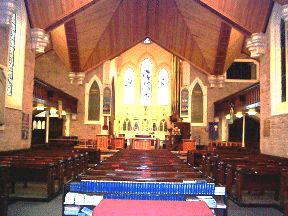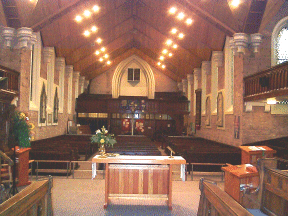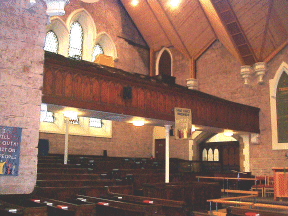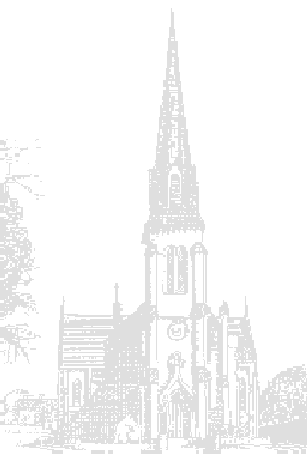|
The
building of Christ Church
The land on which Christ Church stands was
originally part of monastic property and belonged to the monks in
the Priory near Woodside. When Henry VIII closed the Priory he
sold the land to Ralph Worsley who had been a page at his court.
Ralph Womley's daughter married Thomas Powell, a merchant in
Liverpool and in 1713 the land was sold by the Powell's to John
Cleveland. His daughter married Francis Price and a large pan of
the land on which Birkenhead was built remained in the Price
family for over 100 years. In November 1836, a Mr Ball purchased
thirteen acres and three perches of land for £7195-15-0 from Mr
Price, including several cottages. He then sold William Potter a
portion of the land on the west side of Slatey lane. This lane ran
from near the Grange Farm to the stone quarries just beyond our
church. It was a very narrow track and was widened about the time
the church was built.
The outside of the original church building
was shaped differently at the east end. The present cloakrooms,
kitchen, staircases, organ chamber and choir vestry were added
later.
The church was built of red sandstone from
the quarries nearby and finished in 1849. It was the largest
church to be built in Wirral and was designed by Robert William
Jearnard, an architect from London.
It had 1209 sittings - 414 were free and
were "to remain unappropriated forever." The pews and
free sittings have no distinctive difference in appearance except
the former have very low doors. The architectural style is of the
date of the latter part of the reign of Edward I. The reading desk
and the clerk's desk were on the south side of the chancel and the
pulpit which had carved canopies, pendants, and quatrefoil panels,
on the north side.
The pulpit was much higher than the present
one and Canon Robson commented on how far away from the people he
felt when preaching.
The organ and choir were in the gallery at
the west end of the church. The crypt room was used as a school
and had desks arranged for 100 infants, 200 girls and 370 boys - a
total of 760 children. The day school in Borough Road did not even
open until 1880.
There were three entrances to the church;
through the west door to the Nave and the Nave Gallery, through
two entrances at the North and South sides of the church to the
North and South Galleries and transepts and to the school room -
these latter entrances are rarely used today.
The church was lit by gas until 1899 when a
faculty to install electric light was given and the church changed
to electric light on 31st January 1900.
The
Opening of Christ Church
From The Claughton Messenger 1903:
"The unconsecrated building was
opened by licence on Sunday 25th February 1849.
|




